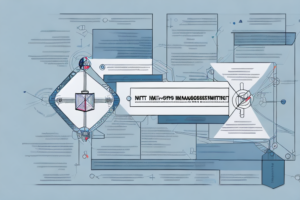What is system inventory update in RMF?

A computer system with a highlighted section showing the process of a system inventory update
System Inventory Update is an important process in the Risk Management Framework (RMF) that ensures the accurate identification and classification of information technology (IT) assets. This process helps IT departments maintain an up-to-date inventory of all their hardware and software assets, including servers, routers, switches, firewalls, and other network devices. The purpose of conducting a system inventory update is to enable organizations to keep track of all the IT assets they own or use, and to ensure that these assets are properly secured and protected from cyber threats.
Understanding the Purpose of System Inventory Update in RMF
One of the primary objectives of the RMF is to ensure that organizations are able to identify and manage risks to their IT assets. System Inventory Update plays a critical role in this process because it helps organizations understand their IT infrastructure and identify potential vulnerabilities and threats. By maintaining an accurate and up-to-date inventory of IT assets, organizations can effectively manage risks from cyber threats such as malware, phishing attacks, and other forms of cyber attacks.
Moreover, System Inventory Update also helps organizations to comply with regulatory requirements and standards. Many regulations and standards, such as HIPAA, PCI DSS, and ISO 27001, require organizations to maintain an accurate inventory of their IT assets. By regularly updating their system inventory, organizations can ensure that they are meeting these requirements and avoid potential penalties or fines for non-compliance.
The Importance of Accurate System Inventory in Risk Management
The importance of system inventory updates cannot be overstated when it comes to risk management. In order to manage risks effectively, it is important for organizations to have a clear understanding of their IT assets and how they are being used. This is where system inventory updates come in. By maintaining an accurate, up-to-date inventory of IT assets, organizations can easily identify and prioritize areas of risk, and implement appropriate security controls to mitigate those risks.
One of the key benefits of accurate system inventory is that it helps organizations to comply with regulatory requirements. Many industries are subject to strict regulations that require them to maintain a comprehensive inventory of their IT assets. By keeping an accurate inventory, organizations can demonstrate compliance with these regulations and avoid potential fines or legal action.
Another important aspect of system inventory updates is that they help organizations to optimize their IT infrastructure. By understanding which assets are being used most frequently and which are underutilized, organizations can make informed decisions about how to allocate resources and improve efficiency. This can lead to cost savings and better overall performance of the IT environment.
How to Conduct a System Inventory Update in RMF
Conducting a system inventory update can be a challenging and time-consuming process, but it is critical for maintaining the security and integrity of an organization’s IT assets. To conduct a system inventory update, organizations should follow these steps:
- Identify all the IT assets that need to be included in the inventory
- Ensure that each asset is accurately classified and labeled
- Gather all the relevant information about each asset, including make, model, serial number, IP address, and location
- Document the inventory using a spreadsheet or other inventory management tool
- Regularly review and update the inventory to ensure its accuracy and completeness
It is important to note that conducting a system inventory update is not a one-time event, but rather an ongoing process. As new IT assets are added or old ones are retired, the inventory must be updated to reflect these changes. Additionally, organizations should consider implementing automated tools to assist with the inventory management process, as this can help to reduce the time and effort required to maintain an accurate inventory.
Finally, it is important to ensure that the inventory is kept secure and confidential, as it contains sensitive information about an organization’s IT assets. Access to the inventory should be restricted to authorized personnel only, and appropriate security controls should be implemented to protect against unauthorized access or disclosure.
Best Practices for Maintaining an Up-to-Date System Inventory in RMF
Maintaining an up-to-date system inventory is essential for effective risk management in RMF. To ensure the accuracy and completeness of the inventory, organizations should follow these best practices:
- Assign ownership of each asset to a responsible individual or department
- Implement a regular review and update schedule for the inventory
- Use standard labels and classifications to ensure consistency and accuracy
- Ensure that all new assets are promptly added to the inventory
- Provide training and support to staff members responsible for managing the inventory
It is also important to ensure that the system inventory is integrated with other risk management processes, such as vulnerability scanning and incident response. This integration can help identify potential risks and vulnerabilities in the system, and enable organizations to take proactive measures to mitigate them. Additionally, organizations should consider using automated tools to help manage the inventory, as this can reduce the risk of errors and ensure that the inventory is always up-to-date.
Common Challenges Faced During System Inventory Updates in RMF
Conducting a system inventory update can be a complex and challenging process. Some common challenges that organizations may face during the inventory update process include:
- Difficulty in identifying all the IT assets that need to be included in the inventory
- Lack of standardization in asset labels and classifications
- Inadequate tools and resources for managing the inventory
- Difficulty in obtaining accurate and up-to-date information about each asset
- Lack of staff resources for conducting regular inventory updates
Another challenge that organizations may face during system inventory updates is the lack of communication and collaboration between different departments or teams. This can lead to incomplete or inaccurate information being included in the inventory, as well as duplication of efforts and wasted resources.
In addition, changes in the IT environment, such as new hardware or software installations, can also pose a challenge to the inventory update process. It is important for organizations to have a system in place for identifying and tracking these changes, and ensuring that they are reflected in the inventory in a timely and accurate manner.
How System Inventory Updates Impact Overall Security Posture in RMF
The system inventory update process plays a critical role in maintaining a strong security posture in RMF. By maintaining an accurate and up-to-date inventory of IT assets, organizations can easily identify and prioritize areas of risk, and make informed decisions about security controls and mitigation strategies. A comprehensive and up-to-date inventory of IT assets also allows organizations to respond more quickly and effectively to security incidents, and to more effectively manage and allocate resources for vulnerability management and risk mitigation.
However, the system inventory update process can also have negative impacts on security posture if not properly managed. Inaccurate or incomplete inventory data can lead to misinformed decisions about security controls and mitigation strategies, leaving organizations vulnerable to attacks. Additionally, if inventory updates are not performed regularly, IT assets may go unnoticed and unmanaged, creating potential security gaps.
To ensure the system inventory update process positively impacts security posture, organizations should establish clear policies and procedures for inventory management, including regular updates and audits. They should also invest in automated tools and technologies to streamline the inventory update process and ensure accuracy. By taking these steps, organizations can maintain a strong security posture and effectively manage their IT assets.
Tools and Technologies to Facilitate System Inventory Updates in RMF
While system inventory updates can be challenging, there are a number of tools and technologies available to help organizations streamline the process. Some of these tools include inventory management software, network discovery tools, and other automated technology designed to identify and classify IT assets. By leveraging these tools, organizations can more effectively manage and maintain their IT assets, and implement appropriate security controls and risk mitigation strategies.
The Role of Automation in Streamlining the System Inventory Update Process
Automation can play a critical role in streamlining the system inventory update process. By automating certain aspects of IT asset identification and classification, organizations can reduce the time and manpower required to maintain an accurate and up-to-date inventory. Additionally, automation can help ensure consistency and accuracy in the inventory and reduce the risk of errors and omissions.
Key Metrics for Measuring the Effectiveness of System Inventory Updates in RMF
Measuring the effectiveness of system inventory updates is critical for ensuring that an organization’s risk management strategies are effective. Some key metrics for measuring the effectiveness of system inventory updates include:
- Percentage of IT assets accurately identified and classified in the inventory
- Percentage of IT assets with up-to-date and complete documentation
- Frequency of inventory reviews and updates
- Percentage of security incidents that were successfully prevented or mitigated due to an accurate and up-to-date inventory
- Cost savings achieved through reduced manpower and improved efficiency in the inventory process
Conclusion
System Inventory Update is an important process in the RMF that plays a critical role in managing risks to an organization’s IT assets. By maintaining an accurate and up-to-date inventory of IT assets, organizations can more effectively identify and prioritize areas of risk, and implement appropriate security controls and mitigation strategies. While the system inventory update process can be challenging, organizations can leverage a variety of tools and technologies to streamline the process and ensure the accuracy and completeness of the inventory. Additionally, organizations can measure the effectiveness of their system inventory updates using a range of key metrics, and use that information to continually improve their risk management strategies.



